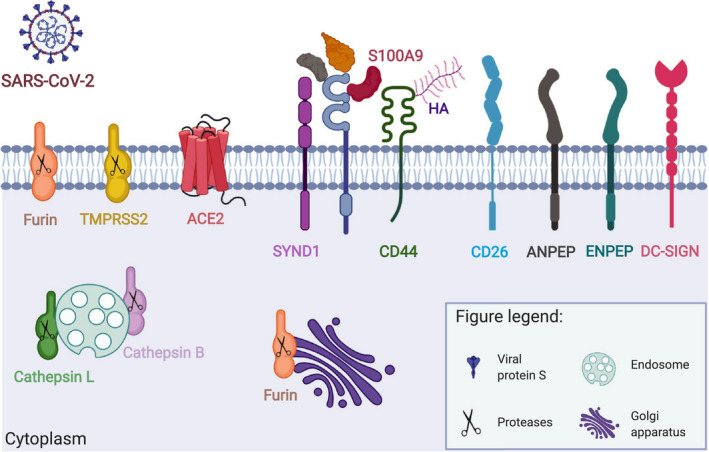FIGURE 2.

Cellular distribution of confirmed and potential SARS‐CoV‐2 receptors and interaction partners. Entry of SARS‐CoV‐2 into the host cells depends on expression of i) adequate receptors and ii) cellular proteases. The two‐step infection process is mediated by the viral Spike (S) protein. Its binding to the receptor and cleavage by proteases assures virus internalization. ACE2 and TMPRSS2 are critical complex for SARS‐CoV‐2 infection. CD147 and its extracellular (Cyclophilin A, Cyclophilin B, Platelet glycoprotein VI, S100A9, Hyaluronic acid) and transmembrane (CD44, Syndecan‐1) interaction partners can be also used for SARS‐CoV‐2 entry and/or modulation of immune responses to the virus. It has been suggested for SARS‐CoV‐2 and shown in case of other Coronavidae family members that they can also exploit other cell surface receptors (CD26, ANPEP, ENPEP, DC‐SIGN) and proteases (Furin, Cathepsin L, Cathepsin) to enter human cells. CypA, Cyclophilin A; CypB, Cyclophilin B; GPVI, Platelet glycoprotein VI; HA, Hyaluronic acid; SYND1, Syndecan‐1. This figure is modified from the original publication by Radzikowska, Ding, et al, presenting the distribution of these receptors in various human tissues and immune cells in healthy children and adults, and in patients with COVID‐19 comorbidities and risk factors (ref). Created with Biorender.com
